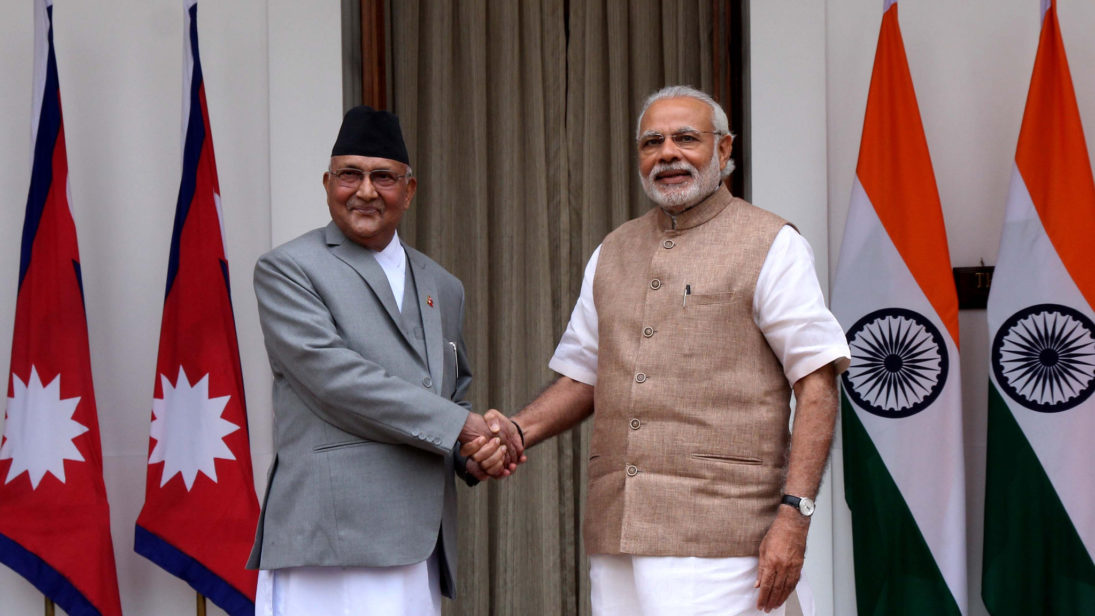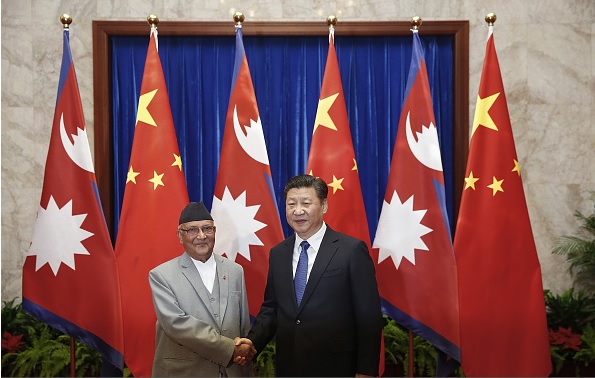
Sandwiched between two emerging giants, Nepal is seeing a battle between India, which is trying to retain its traditional influence in the country, and China, which is increasing its clout through economic development. Indian Prime Minister Narendra Modi will be in Nepal once again on May 11-12, his third visit since 2014, to reemphasize the importance of Nepal to New Delhi and reverse the downturn in bilateral relations that began after India’s unofficial trade blockade of Nepal in 2015. But India will have to contend with a new reality in this relationship: it is unreasonable to expect Nepal not to strengthen ties with China. What will serve India better is to keep its end of the bargain in Nepal and fulfill its promises.
India’s Loss is China’s Gain
Though Nepal and India have traditionally had a close and unique relationship, trouble has been simmering under the surface for a few years. Nepal’s complaint of an outmoded and unequal treaty with India and New Delhi’s constant meddling in Kathmandu’s internal affairs have always been prickly thorns in the relationship. Relations reached a nadir when India choked the supply of essential materials to Nepal in late 2015 due its displeasure over Nepal’s new constitution, and forced Kathmandu to look to its other neighbor, China.
China played its cards right by offering Nepal a durable alternative to India—Beijing provided oil to end India’s monopoly over Nepal’s fuel imports and elevated its relationship with Kathmandu to a strategic partnership on equal terms. Furthermore, Nepal signed on to China’s landmark Belt and Road Initiative last year and as part of it, China is aggressively developing infrastructure in Nepal, including plans to extend its Qinghai-Tibet railway to the Nepali village of Kerung by 2020.

India has noted this rapid Chinese ingress into Nepal with concern. However, with India itself being among the countries in the region that is trying to attract Chinese investment, expecting Nepal not to develop economic relations with China is unreasonable. In addition, projects that India promised to develop in Nepal such as the Pancheshwar hydropower project or upgrade of the rail link between Jainagar in India and Janakpur in Nepal still remain in limbo. Thus, it was just a matter of time that Nepal would turn to its other neighbor, China.
Putting Modi’s Visit in Context
When Modi took charge in 2014, he responded to China’s foray into South Asia by announcing a “Neighborhood First” policy, which aimed to develop a stable and economically-interlinked neighborhood by improving connectivity and cooperation, reducing non-tariff barriers, and increasing India’s sensitivity to regional issues. However, the Indian establishment, which has been hardwired for decades to play hardball and influence its smaller neighbors’ internal affairs, got unnecessarily entangled in Nepal’s constitution, a purely domestic issue, causing setbacks to its newly-adopted neighborhood policy.
Following disagreement over Nepal’s constitution and the blockade, there was a period of iciness between New Delhi and Kathmandu, with the KP Oli government playing tough with India. Oli blamed forces facilitated by the Indian establishment for being pushed out of power but made a dramatic comeback to the premiership with a resounding victory in the 2018 general election. Oli had campaigned on an ultra-nationalist platform and criticized India for meddling in Nepal’s internal affairs. In addition, his Left Alliance was said to be supported by China. All this raised alarm bells in India and realizing its folly, New Delhi offered an olive branch to Oli, sending its foreign minister to Kathmandu to build a positive rapport with Oli even before he became prime minister.
Modi’s visit to Nepal comes just over a month after Oli’s first foreign visit to India during the latest tenure of his premiership. In a sign of a thaw between New Delhi and Kathmandu, the two sides released a 12-point joint communiqué covering a wide range of issues, in contrast to Oli’s earlier tenure as prime minister when a communiqué was not released.
Modi intends to showcase a positive image of India to Nepalis, with the focus of his visit being bilateral economic cooperation and cultural ties. He will lay the foundation for the Arun III 900 MW hydroelectricity project and also visit two places of religious significance: Janakpur—the birthplace of Sita, the wife of the widely revered Hindu god Rama—where he will hold a civic reception, and Muktinath, where he will perform prayers.
Can India Claw its Way Back?
A smaller nation like Nepal will likely continue to play the China card, but what India needs to do is improve on its own weaknesses. As an alternative to China’s BRI, India has offered Nepal its own connectivity plan with the Bangladesh Bhutan India Nepal motor vehicle agreement. It has also agreed to build rail connectivity between Kathmandu in Nepal and Raxaul in India, establish inland water connectivity for movement of people, and lay down a petroleum products pipeline from Motihari in India to Amlekhgunj in Nepal. However, looking at India’s past record of infrastructure projects in Nepal, skepticism is not unreasonable.
Instead of getting caught up in its competition with China, India should instead focus on timely delivery of the projects it has promised Nepal, which will go a long way in building goodwill for India in Nepal and maintaining a positive relationship.
***
Image 1: MEAphotogallery via Flickr
Image 2: Lintao Zhang/AFP via Getty Images


